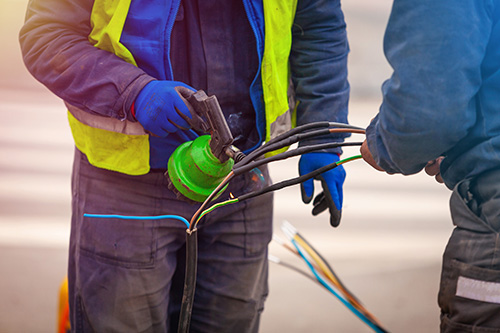Tips For Using Heat Shrink Tubing

Heat shrink tubing is a versatile product that can be used in a variety of applications where you find wire and cable. Even though it’s a commonly used product, there are still some things that you will need to remember when choosing and installing heat shrink tubing to get the best coverage.
- Select the proper size of heat shrink tubing for your application.
You want a secure and tight fit of the heat shrink tubing, make sure the tubing after shrinking is smaller than the diameter of the object you are insulating or splicing. - Try not to force the tubing over an object by stretching or pulling it.
Sometimes when heating, the heat shrink tubing may tear during recovering if it is not the correct size before heating. - If cutting into pieces, don’t forget to factor in longitudinal change before cutting the pieces.
Don’t forget to factor in longitudinal shrink (especially for smaller pieces), the tubing will shrink back or change length during the recovered state. You will see more longitudinal change the more the heat shrink tubing is heated. - Use the specified expanded ID dimension to determine the correct size tubing.
Heat shrink tubing is supplied at a minimum expanded diameter and will remain consistent. - Not all heat shrink tubing is alike! Heat shrink tubing does not always shrink to the same fully-recovered dimensions while shrinking.
Check the dimension specifications for the recovered internal diameter of the heat shrink tubing before heating. The tubing can shrink more than the recovered ID specified, but will always meet the maximum specified dimension. - Watch out for jagged or sharp edges that you are covering.
If you are trying to insulate material that is jagged or has a sharp edge, watch that it does not cause a cut or puncture to the tubing which could result in splitting or cracking during the installation process. - Don’t forget to verify the temperature guidelines before heating the tubing.
You may run into problems if the tubing is not heated high enough (it may not fully recover) or if heated too high, the tubing could split or possibly show burn marks. - When using a heat gun to shrink the tubing, make sure to heat the tubing uniformly.
If there is not-uniform heating of the tubing, you may see wrinkles, which can be called chill marks. - Follow the guidelines for recommended recovery.
This will allow the heat shrink tubing to come to room temperature while assisting in full recovery of the tubing. - Don’t guess on what size tubing you need.
Contact LAPP Tannehill customer service for any questions when selecting heat-shrink tubing for your application, or request a couple of different sample sizes to try out first.
Tips For Using Heat Shrink Tubing
Heat shrink tubing is a versatile product that can be used in a variety of applications where you find wire and cable. Even though it’s a commonly used product, there are still some things that you will need to remember when choosing and installing heat shrink tubing to get the best coverage.
- Select the proper size of heat shrink tubing for your application.
You want a secure and tight fit of the heat shrink tubing, make sure the tubing after shrinking is smaller than the diameter of the object you are insulating or splicing. - Try not to force the tubing over an object by stretching or pulling it.
Sometimes when heating, the heat shrink tubing may tear during recovering if it is not the correct size before heating. - If cutting into pieces, don’t forget to factor in longitudinal change before cutting the pieces.
Don’t forget to factor in longitudinal shrink (especially for smaller pieces), the tubing will shrink back or change length during the recovered state. You will see more longitudinal change the more the heat shrink tubing is heated.


- Use the specified expanded ID dimension to determine the correct size tubing.
Heat shrink tubing is supplied at a minimum expanded diameter and will remain consistent. - Not all heat shrink tubing is alike! Heat shrink tubing does not always shrink to the same fully-recovered dimensions while shrinking.
Check the dimension specifications for the recovered internal diameter of the heat shrink tubing before heating. The tubing can shrink more than the recovered ID specified, but will always meet the maximum specified dimension. - Watch out for jagged or sharp edges that you are covering.
If you are trying to insulate material that is jagged or has a sharp edge, watch that it does not cause a cut or puncture to the tubing which could result in splitting or cracking during the installation process. - Don’t forget to verify the temperature guidelines before heating the tubing.
You may run into problems if the tubing is not heated high enough (it may not fully recover) or if heated too high, the tubing could split or possibly show burn marks. - When using a heat gun to shrink the tubing, make sure to heat the tubing uniformly.
If there is not-uniform heating of the tubing, you may see wrinkles, which can be called chill marks.
- Follow the guidelines for recommended recovery.
This will allow the heat shrink tubing to come to room temperature while assisting in full recovery of the tubing. - Don’t guess on what size tubing you need.
Contact LAPP Tannehill customer service for any questions when selecting heat-shrink tubing for your application, or request a couple of different sample sizes to try out first.
